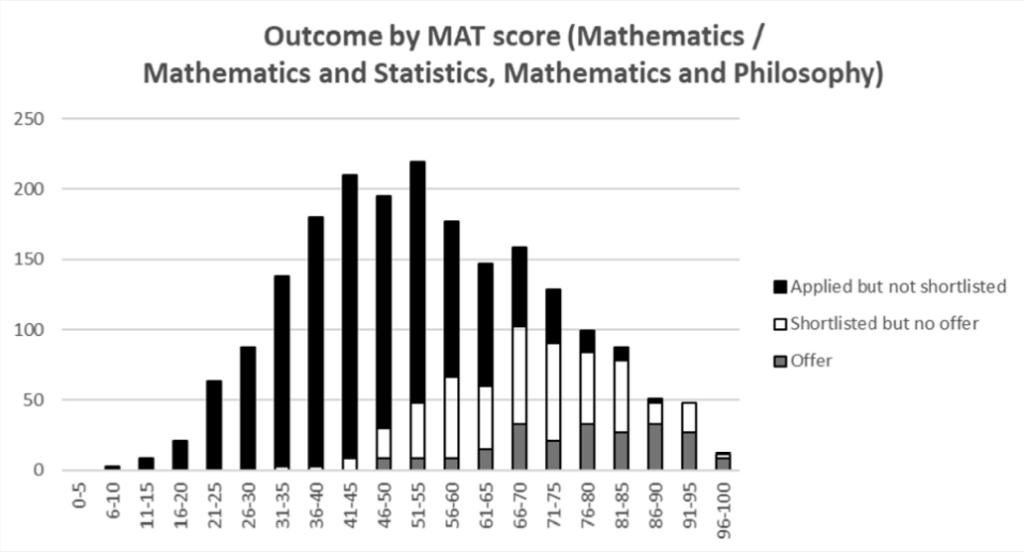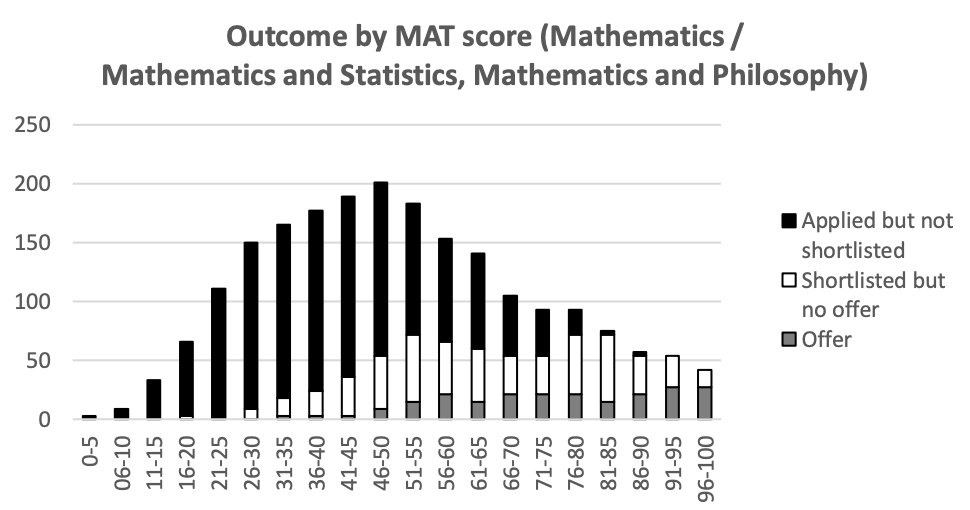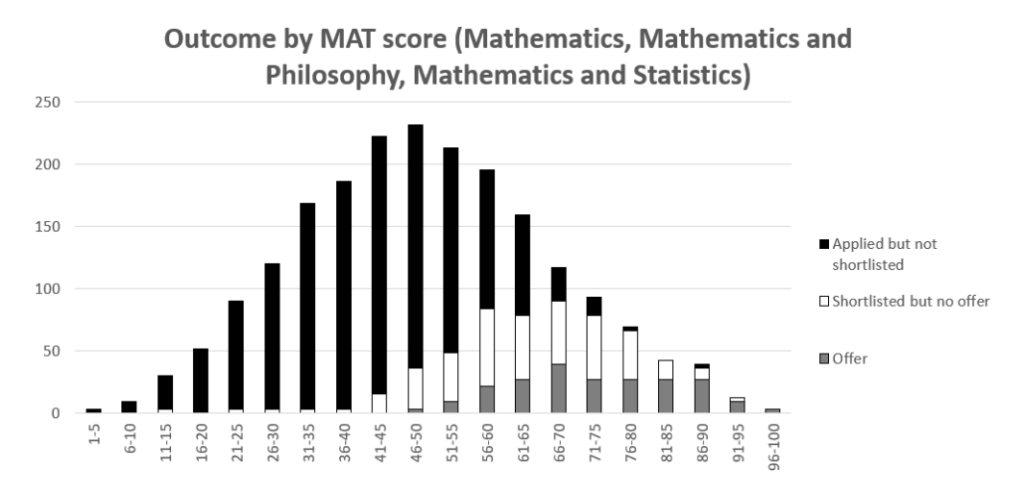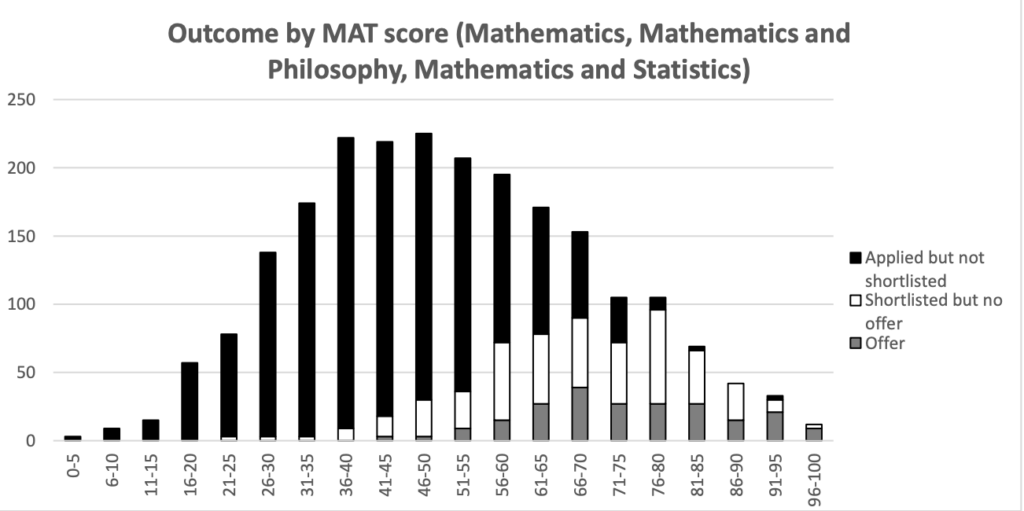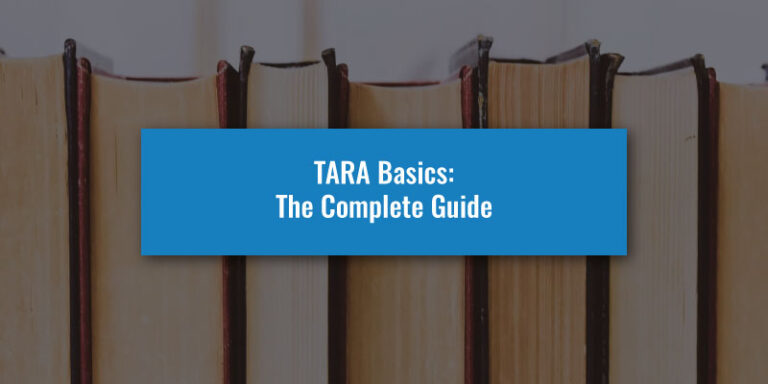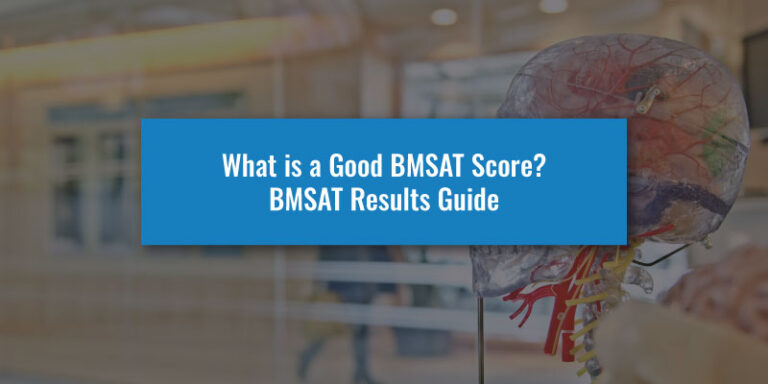The Mathematics Admissions Test (MAT) is one of Oxford’s many tests used within the application process, but it may also be one of the hardest. It tests applicants on a variety of complex mathematical concepts in multiple different contexts, meaning you will need to thoroughly to ensure you get a good score.
In this guide, we’ll explore exactly how the MAT is scored and what score you will need to get to remain competitive in your application based on previous years’ results. Let’s take a look.
How Is The MAT Scored?
First, let’s understand how the MAT is actually scored. The MAT is purely a mathematics exam, so all questions will have definitive answers. However, the marking system is just based on correct answers, as it depends on the question being answered.
In 2024, the MAT format was changed to consist of 25 multiple-choice questions and two written questions with multiple parts. In total, there are 100 marks to be earned throughout the test. You can find out more about the question structure and content within our MAT Basics Guide, but for now, let’s focus on how these questions are scored:
MAT Question 1 - 25 Scoring
These are the multiple-choice questions of the test, so the scoring for these is only based on whether you select the correct answer. The amount of marks you get per question changes based on how far into the test you are, here’s the breakdown:
- Questions 1 - 10: 2 Marks Each
- Questions 11 - 20: 3 Marks Each
- Questions 21 - 25: 4 Marks Each
All of these questions have a combined total of 70 marks, meaning these questions make up 70% of the test’s marks.
MAT Question 26 - 27 Scoring
The last two questions in the test are the longer written questions. These are split into 3 – 4 parts, each of which are marked separately. To gain full marks in these questions, you will need to provide reasoning for your responses as well as give the correct solution. This is primarily done via mathematical notation, though some written explanation will also be required.
In total, these two questions have 15 marks each available, 30 in total. The number of marks per part varies from 2 – 6, here’s the full breakdown based on the official practice test released by Oxford:
- Q26 Part 1: 4 Marks
- Q26 Part 2: 6 Marks
- Q26 Part 3: 5 Marks
- Q27 Part 1: 2 Marks
- Q27 Part 2: 3 Marks
- Q27 Part 4: 4 Marks
- Q27 Part 3: 6 Marks
As stated previously, all of these marks add to a total of 100 marks overall. These marks aren’t converted in any way, so your final reported score will be based on the number of marks out of 100.
Getting a great MAT is crucial to getting your Oxford offer
The MAT is a vital component of your Mathematics and Computer Science application, so scoring highly can mean the difference between an offer or rejection. At UniAdmissions, we are experts at boosting your MAT score and maximising your chances of gaining a place.
Discover our Full-Blue Programme by clicking the button below to enrol and triple your chances of success.
What Is A Good MAT Score?
So now that we understand how the MAT is scored, it’s time to consider exactly what a good score would be for the test. Of course, a score of 90 or 100 would be great, but most applicants realistically won’t achieve this. Instead, we should consider what the boundaries are for a good, average and low score. We can determine this by looking at previous MAT results.
Past MAT Results
Although these historical results will give us a good insight into how applicants generally scored out of 100 on the test, bear in mind that these results are based on a different format of the MAT test, which only featured ten multiple-choice questions (representing just 40 marks in the test) and four written questions worth 60 marks overall.
Let’s start by looking at the score distributions for the last four years of the MAT.
What can we see from these graphs? Firstly, we’ve got to be aware that these graphs only track applicants for Mathematics (and joint degrees), so Computer Science applicants aren’t featured.
From 2021 – 2023, the modal score for each MAT sitting was between 46 and 50, meaning this was the most common score range. This increased to 51-55 in 2024. Looking at the extremes, more applicants were able to achieve 91 – 100 and those who scored 0 – 10, with the graph reporting 0 applicants achieving 0-5.
We can also see that, in most years, more applicants are given interviews as early as the 31 – 35 range, although it becomes much more common after 51 – 55. Almost all applicants who scored 86 or more were invited. However, even in the highest score brackets, offers weren’t guaranteed, even if interviews were. This goes to show just how important your interview performance is to getting into Oxford.
Oxford reported that there were over 2,600 MAT test takers applying to Mathematics in 2024 alone, so you need to be prepared to compete with a lot of MAT test takers each year.
While understanding these scores is helpful, there’s a key piece of data that’s important to understand: the average scores:
Average MAT Scores
Below, we can see the average scores of all MAT test takes (for Oxford Mathematics) in each year, as well as the average scores of all applicants who were offered a place on these courses:
Average MAT Scores 2024
Average MAT Score (All Applicants): 54.4
Average MAT Score (Offer-holders): 77.4
Average MAT Scores 2023
Average MAT Score (All Applicants): 51.2
Average MAT Score (Offer-holders): 75.1
Average MAT Scores 2022
Average MAT Score (All Applicants): 48.3
Average MAT Score (Offer-holders): 71.5
Average MAT Scores 2021
Average MAT Score (All Applicants): 51.1
Average MAT Score (Offer-holders): 73.5
These figures paint a much clearer picture of what scores we should be aiming for, although there is some variance throughout. As it stands, 2024 saw the highest average scores for applicants in the last four years. The test saw a major change to its format in 2024, with a greater focus on Multiple-Choice questions, so it’s not a surprise to see that applicants generally performed better in this year.
However, before we determine what a good MAT score is, we need to once again consider the changes made to the format.
Access "The Oxbridge Application Vault"
- 300+ page ebook for Oxbridge Applicants
- 25 page ebook for Personal Statement
- 2h+ online course to succeed in any exam
- Online Oxbridge Success Calculator
- 12 page ebook about UniAdmissions

Access "The Big Book Of Oxbridge Applications" For FREE
The MAT is just one part of your Oxford application. Discover everything you need to know about the whole process in The Big Book Of Oxbridge Applications, available for free here! Through over 350 pages, you will find:
- Over 40 admissions test practice questions
- 28 example Oxbridge Personal Statements
- Interviews with Oxbridge students and graduates
- Additional downloadable resources
Fill in your details below to claim your digital copy today!
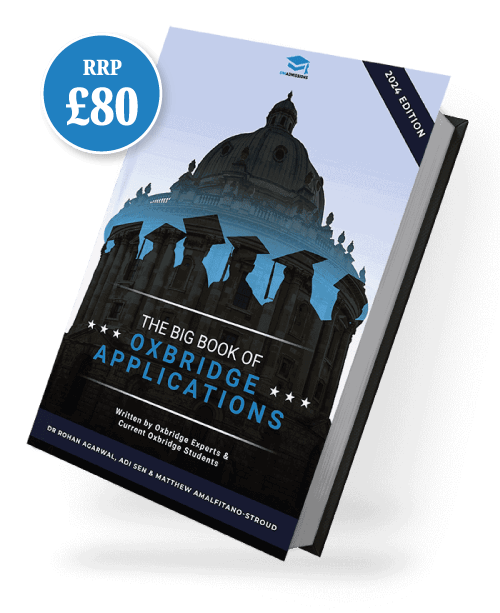
MAT Format Changes
As we know, the MAT is now primarily multiple-choice questions, making up 70% of the available marks and around 90% of the total questions. So, what does this mean for MAT scoring?
Multiple-choice questions are generally easier than written questions as they require less reasoning to be written and can be guessed if you don’t know the answer. So this means that unless the question difficulty is significantly increased, average scores will likely increase as more applicants achieve higher marks from the first 25 questions.
While this Is good in some ways, it also means that you’re going to have to work a lot harder, especially in the last two questions, to ensure you get as many marks as possible and can stand out.
Oxford is an incredibly competitive university and generally only invites around 30% of applicants to interview for Mathematics, so you’ll need to ensure you fall within the top 10% – 20% of applicants to feel comfortable about your chances of receiving an interview invitation.
With that in mind, let’s consider what a good, average and low MAT score looks like.
Good MAT Score
While we can’t determine exactly what a good MAT score will be until the MAT 2024 results are published, we can base our assumption on what we currently know. Offer holders for Mathematics generally scored around 75 on average, but with the decreased difficulty, we would suggest that a score of 80 or more would be a good score to achieve in the MAT.
Average MAT Score
We’ve already seen that the average score for the MAT was around 50 each year, but applicants for 2024 may be more likely to score between 60 – 70, so we would imagine these would be the new average scores. At this range, you still have a decent chance of being interviewed, but there will also be far more applicants in this range who will be rejected. Take this with a grain of salt, as we currently don’t have the data to confirm this assumption.
Low MAT Score
If an average MAT score is around 60, then a low score would be anything below this, although a score of less than 50 will be where your chances of success begin to really drop. While applicants with any score can still be eligible for an interview, high-scoring applicants are almost always favoured unless you have something within your application that makes you much more competitive.
That is currently all we can say about MAT scoring. Due to the format change, there is a fair amount of uncertainty about how difficult the new version will be and how applicants will perform. We’ll have to wait until these results are released before we can better define these tears of score.
However, one thing that is definitely true is that you’ll need to work hard beforehand to prepare for the MAT. The test may be easier this year compared to previous years, but it’s still a really difficult exam, so practice and revision are essential for getting a good score.
If you’re not sure how to approach your preparation, consider UniAdmissions’ MAT Preparation Programme, which offers everything you need to understand every aspect of the test and improve your exam technique. You’ll be working with Oxford experts who have experienced the MAT firsthand and understand the secrets to success. Plus, you’ll have all the resources you need to learn even more and put your knowledge to the test. If you want to learn more, explore the programme page now or speak with our admissions team by booking a free consultation. Thank you for reading and good luck!
Get the MAT score you need and earn your offer with support from UniAdmissions
Our MAT Programme was designed using our knowledge of Oxbridge applications to provide the most effective support for the MAT. Through tuition, courses and expert resources, you’ll have everything you need to get a great MAT score!
Discover our Full-Blue Programmes below and find out how you can enrol and triple your chances of success.

